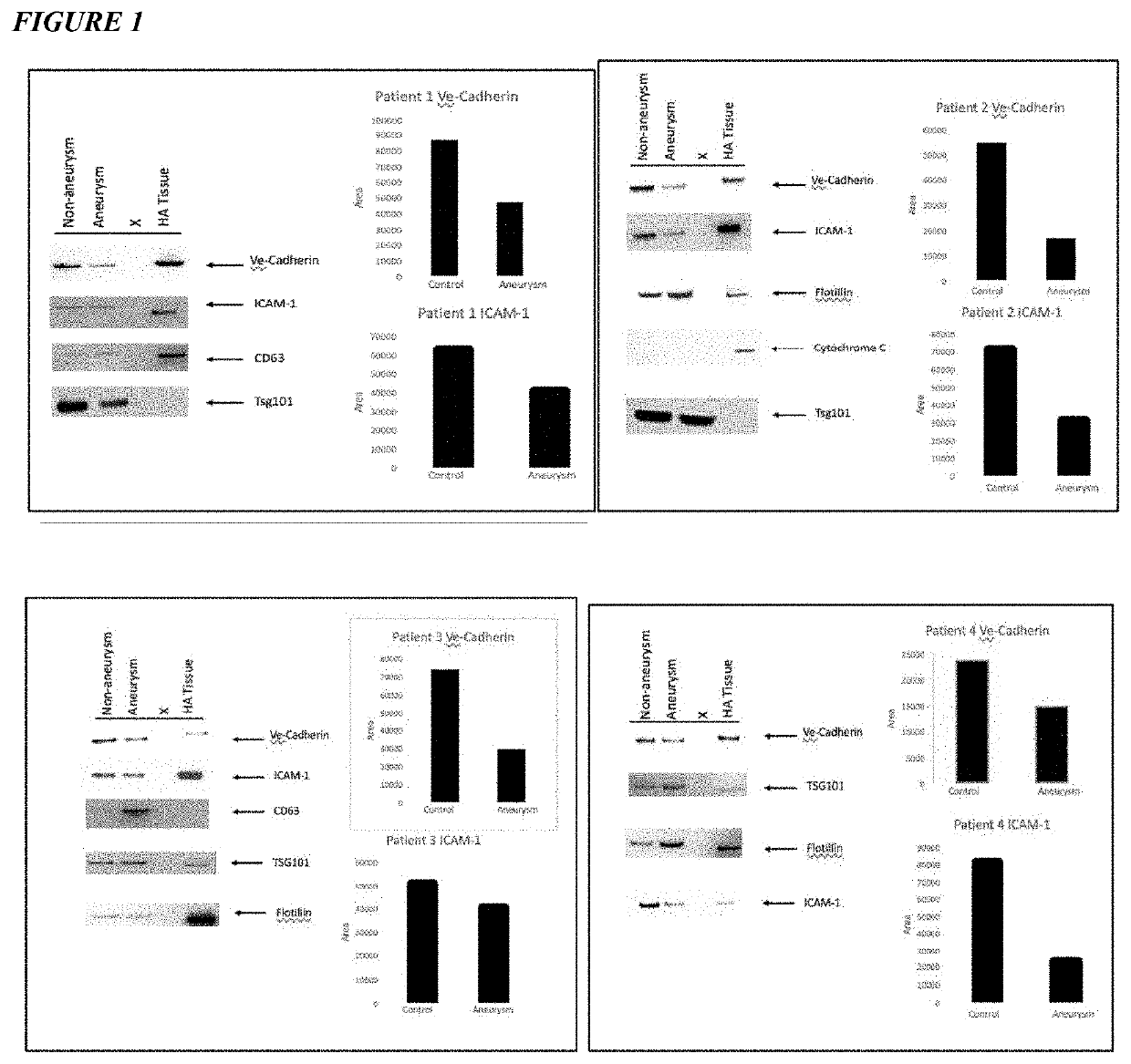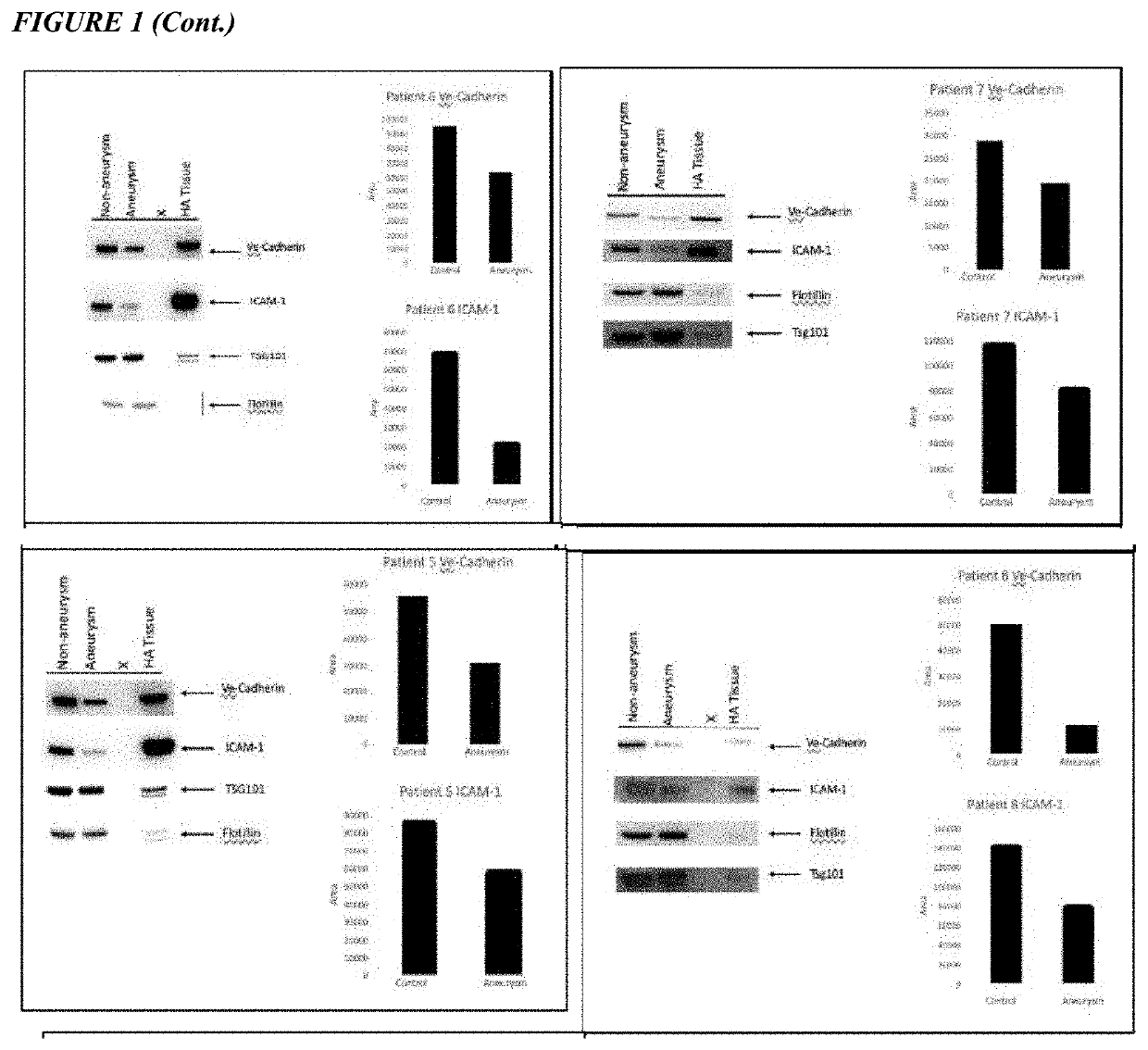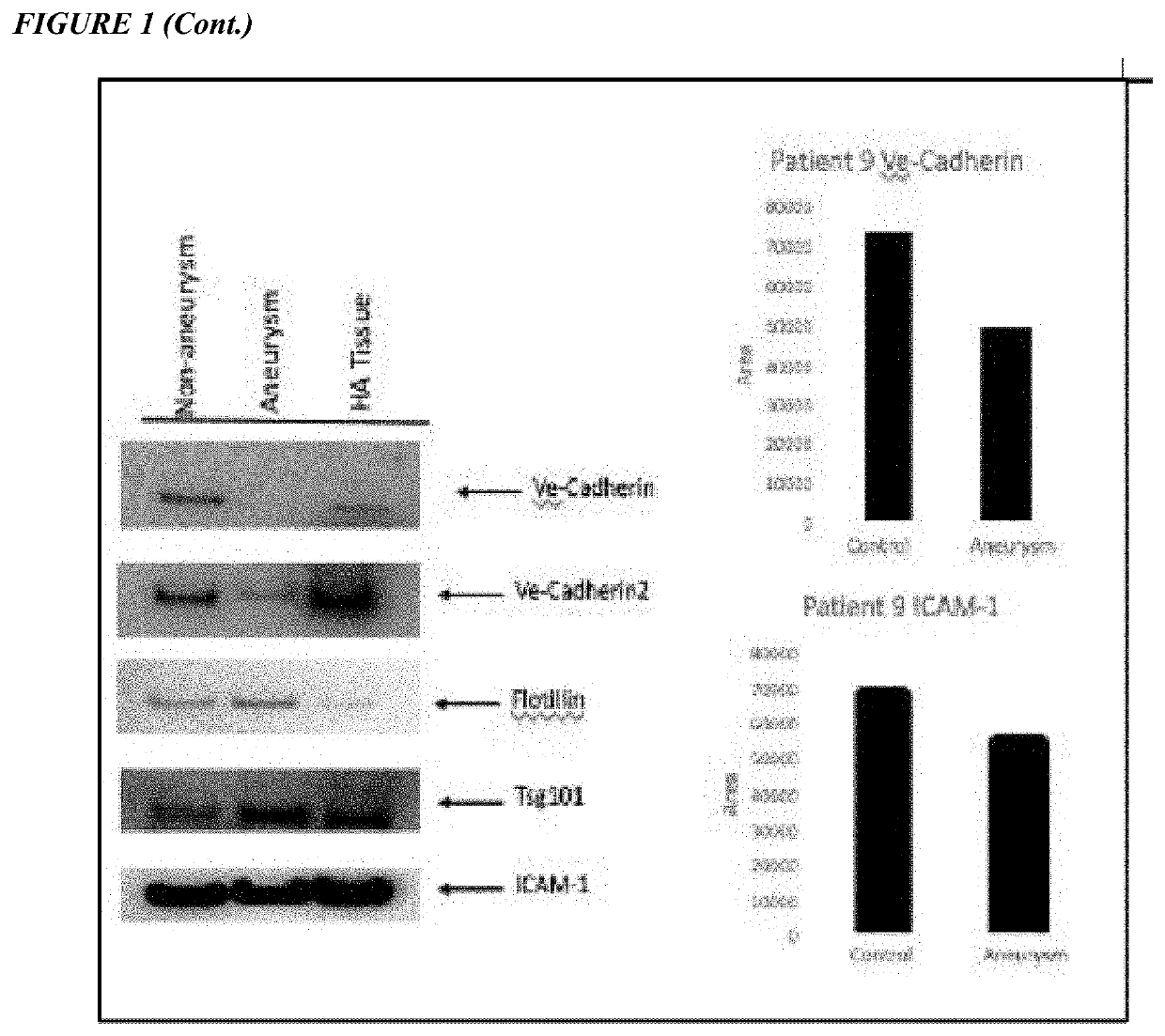Methods for treating aortic aneurysm disease
a technology for aortic aneurysms and aortic valves, applied in biochemistry apparatus and processes, instruments, material analysis, etc., can solve the problems of aortic valve wall, increased risk of aortic valve rupture, and shock and death
- Summary
- Abstract
- Description
- Claims
- Application Information
AI Technical Summary
Benefits of technology
Problems solved by technology
Method used
Image
Examples
example 1
Circulating Endothelial Specific Exosomes as Noninvasive Biomarkers of Aortic Aneurysm Disease
[0178]The present Example shows that circulating endothelial specific exosome profiles were significantly altered in patients with an aortic aneurysm disease compared to age and gender matched controls. Validation by analysis of endothelial specific exosomes in a Marfan (MFS) mouse model of aortic aneurysm disease and aneurysm patients were performed. The results demonstrate that circulating endothelial exosomes enable noninvasive diagnosis of ascending aortic aneurysm disease.
[0179]The present Example examined the correlation between aortic root size with corresponding changes in the plasma endothelial exosome profiles of patients with MFS. It was found that immediate processing of plasma samples provides more reliable and consistent results, than stored samples that have been thawed several times. Mouse and human studies were performed to characterize the endothelial biomarkers, VE-cadher...
example 2
Circulating Endothelial-Specific Exosome Profiles Enable Non-Invasive Screening for Ascending Aortic Aneurysm Disease
[0191]The present Example shows that circulating endothelial-specific exosome profiles were significantly altered in patients with ascending aortic aneurysm disease compared to age and gender-matched controls.
[0192]Plasma exosomes were isolated from 25 presurgical aneurysm patients with ascending aortic aneurysm disease, along with 25 age and gender-matched volunteer subjects who served as controls (Control group). Electron microscopic image of plasma extracellular vesicles revealed that most of the nanoparticles isolated were in the size range of exosomes (FIG. 14A). First, it was confirmed that microvesicles isolated from human plasma were enriched in exosomes, without contamination from cellular constituents / apoptotic bodies (FIG. 14C). Nanoparticle detector analysis demonstrated that majority of exosomes isolated from plasma have surface expression of VE-cadherin ...
example 3
Methods
[0197]The present Example illustrates exemplary methods used for the data discussed in Example 1 and Example 2.
[0198]Endothelial specific exosome purification was successfully achieved from samples of patients with ascending aortic aneurysm disease or aneurysm disease and controls. Endothelial cell specific exosomes were collected, and the RNA cargo was isolated. Next generation sequencing of the microRNA cargoes was performed with ingenuity pathway analysis. Sequencing files were analyzed with QIAseq® miRNA Primary Quantification (GeneGlobe). Reads from 271 total miRNAs and piRNAs were filtered, removing RNAs with only one non-zero entry across all samples (FIGS. 23 and 24). The remaining 148 RNA reads were normalized to account for differences in sample library size using the trimmed mean of M values (TMM) method. LogCPM values were used for partial least squares regression (PLSR).
[0199]To construct the PLSR model, SIMCA-P software (Umetrics) was used to solve the PLSR prob...
PUM
| Property | Measurement | Unit |
|---|---|---|
| size | aaaaa | aaaaa |
| size | aaaaa | aaaaa |
| size | aaaaa | aaaaa |
Abstract
Description
Claims
Application Information
 Login to View More
Login to View More - R&D
- Intellectual Property
- Life Sciences
- Materials
- Tech Scout
- Unparalleled Data Quality
- Higher Quality Content
- 60% Fewer Hallucinations
Browse by: Latest US Patents, China's latest patents, Technical Efficacy Thesaurus, Application Domain, Technology Topic, Popular Technical Reports.
© 2025 PatSnap. All rights reserved.Legal|Privacy policy|Modern Slavery Act Transparency Statement|Sitemap|About US| Contact US: help@patsnap.com



